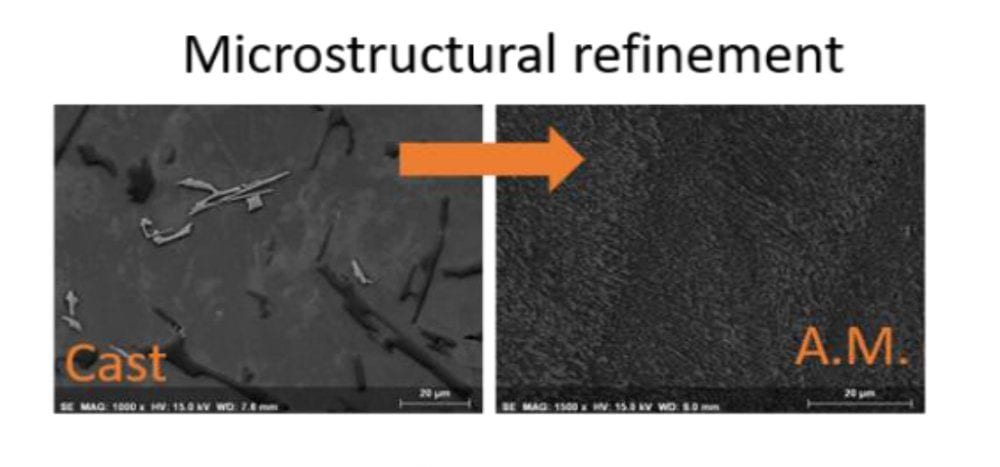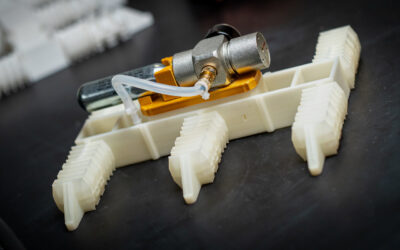 Fusion-based additive techniques – that consist in building a 3D complex-shaped component layer by layer by melting locally a metallic powder or wire using a laser or an electron beam as heat source – have now been attracting a growing interest for over 20 years. These techniques have evolved gradually from the rapid production of mere prototypes towards the actual fabrication of structural components made from steel, titanium- or nickel-based alloys for a large diversity of uses, e.g. in the automotive, aeronautic or energy industries. Yet, in spite of the many advantages of aluminum alloys such as their light weight, their high specific strength and good corrosion resistance that makes them materials of choice for all transportation and portable applications, their processing by additive manufacturing has until recently received much less attention compared with other metallic materials. Indeed, the fairly high thermal conductivity of aluminum alloys is challenging in terms of process control. Besides, their strong tendency to form thick oxide layers is another major issue for the obtention of defect-free parts.
Fusion-based additive techniques – that consist in building a 3D complex-shaped component layer by layer by melting locally a metallic powder or wire using a laser or an electron beam as heat source – have now been attracting a growing interest for over 20 years. These techniques have evolved gradually from the rapid production of mere prototypes towards the actual fabrication of structural components made from steel, titanium- or nickel-based alloys for a large diversity of uses, e.g. in the automotive, aeronautic or energy industries. Yet, in spite of the many advantages of aluminum alloys such as their light weight, their high specific strength and good corrosion resistance that makes them materials of choice for all transportation and portable applications, their processing by additive manufacturing has until recently received much less attention compared with other metallic materials. Indeed, the fairly high thermal conductivity of aluminum alloys is challenging in terms of process control. Besides, their strong tendency to form thick oxide layers is another major issue for the obtention of defect-free parts.
However, starting in 2015, significant progresses have finally been made in the additive manufacturing of aluminum alloys. New aluminum-based alloys have been designed specifically (e.g. aluminum-scandium alloys), in order to take better advantage of the much faster cooling rates imposed by additive manufacturing compared to conventional processing routes and to obtain enhanced mechanical properties. Advances were also registered with respect to the optimization of additive processes and post-processing treatments. The paper by A.I. Mertens, J. Delahaye and J. Lecomte-Beckers thus aims at reviewing these latest developments and at highlighting current trends and prospects in the additive manufacturing of aluminum alloys.














